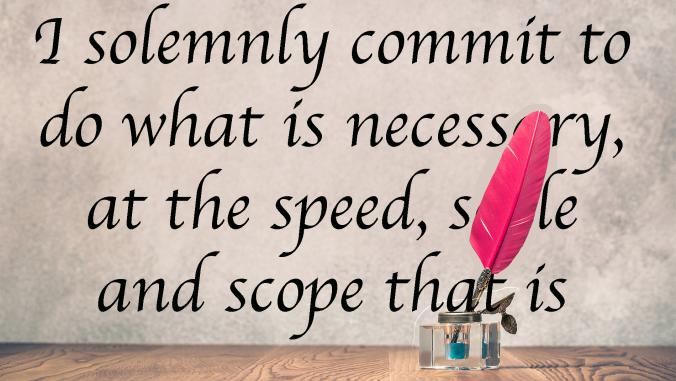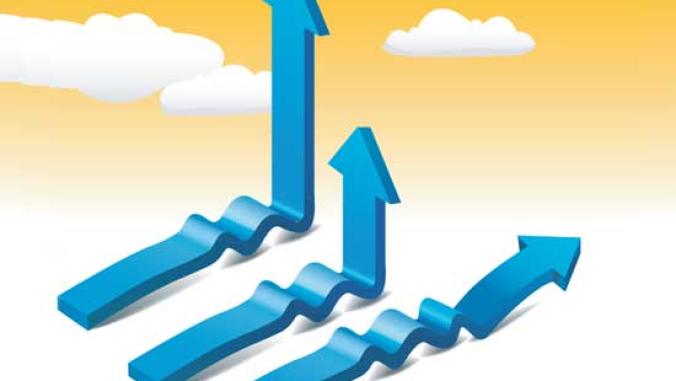How business can learn to navigate the Anthropocene
Cultivating new mindsets is just one way to steer through this tumultuous, shifting landscape.

I began writing The New Bottom Line in 1992 as a biweekly column for Los Angeles Times syndicate. For years it was hosted at the Natural Logic website. Now, after a hiatus, I’m pleased to have it reestablished at GreenBiz, where I’ll offer monthly strategic perspectives on business, sustainability, innovation and the climate challenge.
It’s pitch dark. There’s no moon. You can’t find your map. The ground shifts beneath your feet. You grope tentatively to detect sure footing, or the edge of a precipice.
Welcome to the Anthropocene. Now that you’re here, how will you navigate a landscape with no maps and with endlessly shifting features? Climate weirding. Head-spinning business and technology disruption. Disorienting and disturbing political turmoil. Culture wars. And the most unstable geopolitical situation since the heart of the Cold War. Or, in other words, "There be dragons here!"
If you haven't heard the term yet, you will. The Anthropocene, Wikipedia tells us, "is a proposed epoch dating from the commencement of significant human impact on the Earth’s geology and ecosystems, including, but not limited to, anthropogenic climate change."
The term evokes the rising human impact of biodiversity, species extinction, the health of Earth’s ocean and, of course, the challenge of climate change — not just on human well-being, but also on the living systems that undergird the human economy and all we hold dear.
What characterizes the Anthropocene — in addition to foreboding, despair and denial — is the unparalleled uncertainty of the landscape we will traverse this century. How much change? How fast? Exactly when and where? Planners, executives and investors want answers, but while the trends and directions are increasingly clear, the specifics are not.In the face of uncertainty come deep challenges — to enterprises, governments and plain folk — of making plans and moves when the normal maps and guideposts no longer work.
In the face of this uncertainty come deep challenges — to enterprises, governments and just plain folk — of making plans and moves when the normal maps and guideposts no longer work. Traditional modes of extrapolative planning, which depend on projecting past trends into the future, inevitably fail. Normative planning — reverse-engineering the future from aspirations (as NASA did in developing the Apollo mission) — becomes essential, even though most institutions have little experience and little comfort with it.
A dozen years ago I wrote with Chauncey Bell, a master of business design, that "business is on a collision course with a set of global shifts that almost no one has adequately prepared for. These inevitable surprises (in futurist Peter Schwartz’s words) are coming fast. For those who are ready, these shifts will be platforms for change. For those who are not ready, they are traps."
Some address this challenge by trying to bring "futures thinking" and forecasting skills into business leadership and initiatives. Futures thinking is at the heart of invitation — the ability to tolerate and even embrace uncertainty, and discern pattern in it; to imagine, accept and drive discontinuous change; to formulate compelling and sometimes unreasonable visions and develop strategies that can fulfill them.
But a focus on "forecasting skills" can be a trap of another sort. While it’s essential to imagine and explore possible futures (through scenario-planning and other processes) and often useful to calibrate those possible futures (with projections and simulations), it can be a fool’s errand to think we can forecast the future, any more than to think we can time the market. The past 10 years, 10 months, 10 weeks and 10 days should make that clear.
Yet it is possible to develop the appetite, ability and even serenity to navigate, anticipate and respond to — and perhaps even steer — the waves of change and tumult likely to characterize the rest of this century.
How? By cultivating new mindsets as a fundamental underpinning to deploying new tools. By developing a shared, principle-based understanding of the 3.8 billion years of open-source R&D that nature has gifted to us, and by learning to use the orienting compass it provides. By nurturing conversations that open possibility, forge commitment, ensure accountability and replace resignation with resolve. By providing a clear line of sight that connects purpose, goals, actions and impacts for every member of your organization, value chain and communities of interest, so everyone can see the impacts of their actions — including your CFO.A focus on 'forecasting skills' can be a trap of another sort.
Why? To enable diverse teams to work with that magical balance of what cyberneticist Allenna Leonard has called "autonomy in a coherent whole." And to include not just the "rear-view mirror" metrics of CSR and ESG reporting, but also the "radar" metrics that could disclose potential disruption and could identify disruptions to your metrics. (Blockchain, anyone?)
My wife and thought partner cautions that this may read as just some guy’s opinions. In fact, they are observations grounded in 45 years of observation, and in the unforgiving laboratory of close work with some of the most world’s most successful and innovative companies.
I’ll end this opening foray with a provocation, an invitation and a promise.
The provocation: Since the biggest competitive advantage this century will belong to those able to see through the fog, and to see the reefs and clear channels that the fog obscures for their competitors, how will you nurture your organization’s capacity to navigate the Anthropocene?
The invitation: Join me over the coming months for a grounded, pragmatic conversation together to explore this landscape.
The promise: Together we will discern the landmarks and milestones, find the ways of wayfaring, sketch the maps that you currently lack and chart a course for you to put these insights to work in support of purpose-driven impact.





